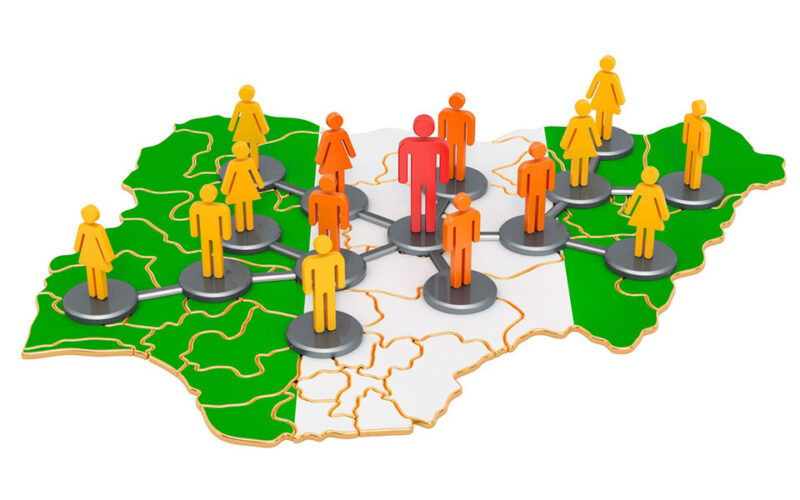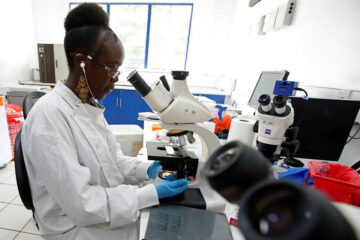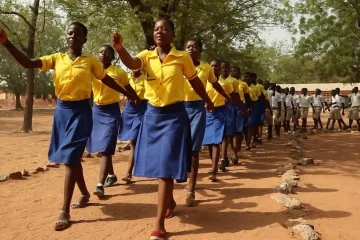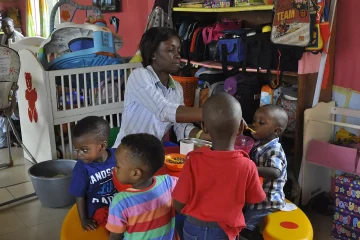RESEARCH is a means to an end. It produces new knowledge that helps to improve welfare. Social science research in particular connects directly to the challenges of less developed countries like Nigeria.
It is generally aimed at strengthening policies and practices for economic growth, development and societal welfare. Good social science research has ultimate social relevance. In Nigeria, however, our study shows that research evidence and policies are disconnected. This is due to two main problems. It is evident from past research and our findings too corroborate this.


First, the people who make and use policies don’t look for scientific evidence as much as they should. For instance, most lawmakers do not use scientific evidence on a regular basis. And when they do, policymakers would rather seek expert opinions than read academic journals.
Second, the supply of capacity and skills – this refers to the training and performance of social scientists – for science communication and policy advice is short. This is probably as a result of the general tradition among academics and the low demand for evidence by policymakers. Researchers are still obsessed with purely academic products like journal papers and books to share their research findings even when they have clear policy implications.
Globally, a research article is read in full by only about 10 people on average. The researchers should focus more on communicating their results via channels that connect readily with policymakers, such as: through policy briefs; and in more political and public fora, such as public hearings that Houses of Assembly sometimes organise.
To reduce the gap between social science research and policies, it’s necessary to understand the current research diffusion landscape. Our research assessed how social science research is currently being disseminated in Nigeria, the most populous country in Africa and the second largest producer of this research in Africa.
Our results highlight the need for consistent capacity building in science communication and broader stakeholder interactions.
.
Actors and networks
We gathered data from interviews of 17 key informants and surveys of 684 individuals. These included 506 researchers, 117 research administrators and 61 policymakers. They were asked to present their opinions about how social science research is produced, disseminated and used in Nigeria.
Our results show that the universities and research institutes that produce most of the research are the main disseminators. Foreign donors and civil society organisations contribute to research dissemination through funding and the use of research results in advocacy activities, respectively. Collaboration is pervasive among different stakeholders but is dominated by actors within the national university system.
We found a strong tendency for the research community to be inert. For instance, a senior staff member of the National Universities Commission noted in an interview that university academics “operate as orphans in their silos and bunkers”. Though social science researchers do collaborate with other professionals, most of their interactions are within the academic circle. Researchers mostly reported co-authorship with someone in their home institution. Far fewer co-wrote with professionals outside the academic circle, such as nongovernmental organisations or donors.
Research communication products
Social science researchers in Nigeria do not communicate their research results to policymakers and the general public. Largely as a result of academic tradition and promotion requirements, researchers mainly share their research findings within academic circles, for academic purposes.
In our study, an average of two policy briefs per researcher was produced by 85 researchers compared with an average of eight research articles per researcher produced by 242 researchers.
Previous research suggests that policymakers and other research users tend to rely on the Internet as a source of research information. Therefore social science research should be visible online. Most of the local scientific journals do not operate online; thus, most of the research outputs they publish are not visible.
Only a third of all the surveyed researchers were affiliated with institutions that provided web pages. Fewer than half of the researchers were registered as authors in internationally visible databases or repositories. Any researcher in any discipline can create a free Google Scholar profile. Alternatives like ResearchGate, Academia.edu and ORCiD also exist to enhance the visibility of researchers and their work. ORCiD is a digital identifier that distinguishes a researcher from others. So research visibility is not just a matter of infrastructure or research quality; awareness and capacity also play a role.
International Network for Government Science Advice 2020 specifically suggests that researchers need to feature more regularly on media programmes to communicate their research findings. Also, they should present research in a way that’s easy to understand, via communication channels like public seminars or roundtables on contemporary issues. Our survey results show that Nigerian research producers perform poorly in this regard.
In general, the proportion of researchers who have had any media exposure at all is small. It ranges from 13% for print media to 22% for radio channels. The average number of media appearances per researcher is about one a year for print media and about three a year for radio channels. This is perhaps due to the costs of media interventions, which are lower for radio than for newspapers or the TV. It may also be because radio channels have wider coverage especially in local languages, compared with the Internet, TV or newspapers.
Taken together, the above results suggest that there is still a big gap in the Nigerian social science research system as far as effective communication of research beyond academic publications is concerned.
The way forward
To create a strong connection between research and policy in Nigeria, two steps are critical.
One, changes are required in the assessment of researchers’ contribution to knowledge. Researchers are committed to formal scientific publications because of globally driven academic traditions and career requirements. A system that objectively weighs and awards points for less conventional outputs such as policy briefs, policy advisory services and media appearances is likely to have a positive effect.
Two, there is a need to build the capacity of researchers to communicate with others outside the academic circle, especially policymakers. The National Universities Commission, which regulates the universities, is well positioned to initiate a capacity-building effort. Moreover, some academics are already advocating science and could train others.
Research donors may help too, by requiring clear dissemination plans as part of research grant applications.
The personnel, practice, products and place for communicating research evidence matter. They are critical links that connect research to development. Having skilled social scientists, who use the right channels to present evidence to policymakers and the general public will benefit everyone, from the researchers to the citizens and the nation as a whole.














